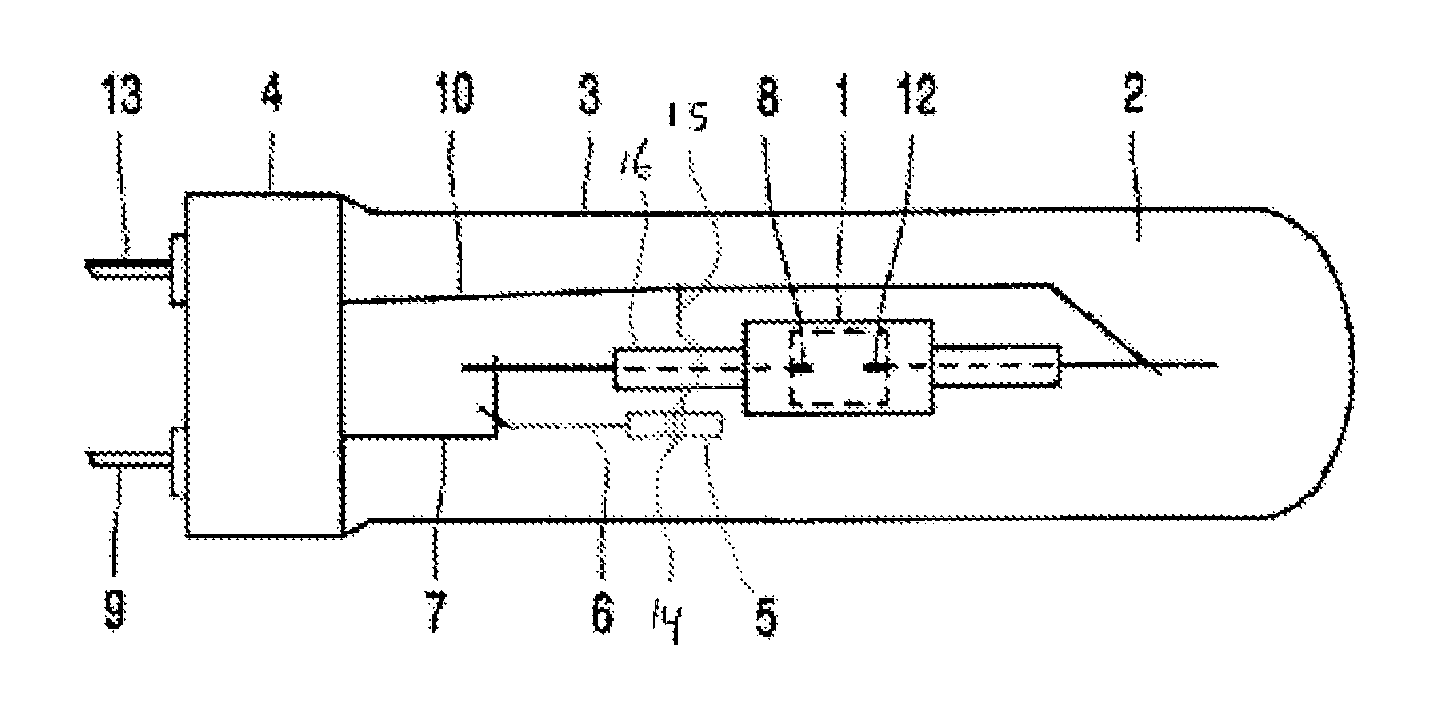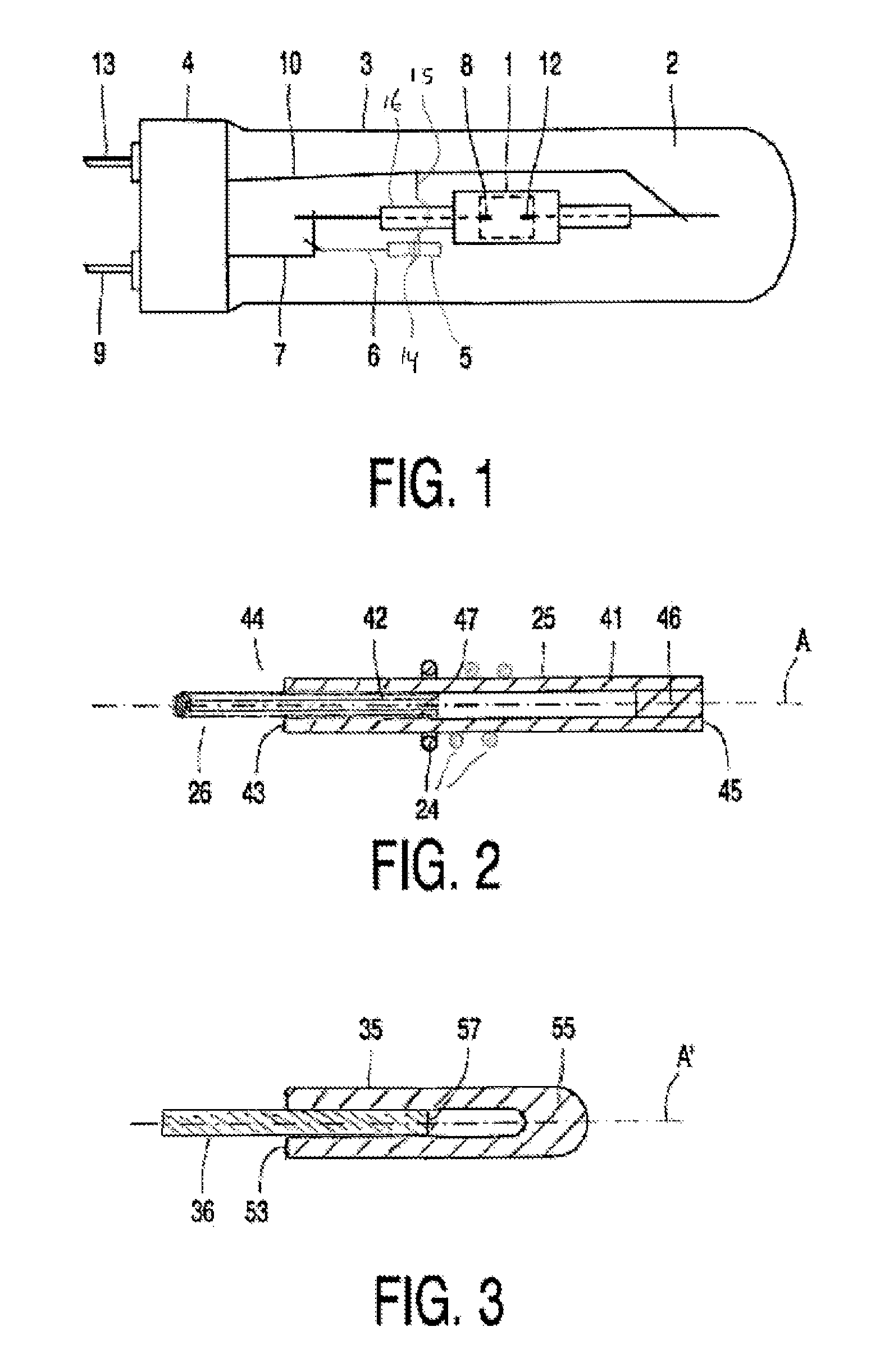UV-enhancer arrangement for use in a high-pressure gas discharge lamp
a gas discharge lamp and uv-enhancer technology, which is applied in the manufacture of electric discharge tubes/lamps, gas discharge lamp details, electrode systems, etc., can solve the problems of complex and expensive vacuum process
- Summary
- Abstract
- Description
- Claims
- Application Information
AI Technical Summary
Benefits of technology
Problems solved by technology
Method used
Image
Examples
Embodiment Construction
[0030]FIG. 1 shows a high-pressure metal halide lamp comprising a discharge vessel 1 surrounded with an interspace 2 by an outer envelope 3, which supports a lamp cap 4. The discharge vessel 1 is made of densely sintered polycrystalline aluminum oxide and has a first lamp electrode 8 and a second lamp electrode 12, which electrodes are connected to contacts 9 and 13 on the lamp cap 4 by means of current supply wires 7 and 10, respectively. The lamp is provided with an UV enhancer 5, which is situated in the interspace 2. Said UV-enhancer is positioned in close proximity to a connection between the current supply wire 7 and electrode 8 inside an end part (VUP) 16. The UV enhancer has an internal enhancer electrode (not shown here; see 42 in FIG. 2) which is connected to the first lamp electrode 8 by means of a lead-through wire 6. The UV enhancer has a capacitive coupling with the second lamp electrode 12. This coupling is constituted by a metal curl 14, which is connected to the sec...
PUM
 Login to View More
Login to View More Abstract
Description
Claims
Application Information
 Login to View More
Login to View More - R&D
- Intellectual Property
- Life Sciences
- Materials
- Tech Scout
- Unparalleled Data Quality
- Higher Quality Content
- 60% Fewer Hallucinations
Browse by: Latest US Patents, China's latest patents, Technical Efficacy Thesaurus, Application Domain, Technology Topic, Popular Technical Reports.
© 2025 PatSnap. All rights reserved.Legal|Privacy policy|Modern Slavery Act Transparency Statement|Sitemap|About US| Contact US: help@patsnap.com


